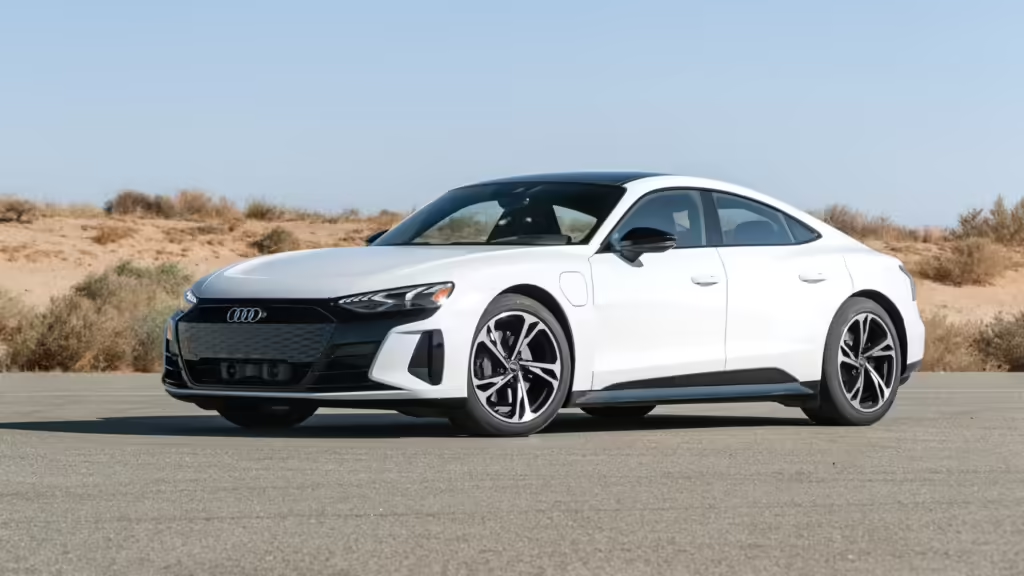The Audi e-tron marks Audi’s ambitious foray into the electric vehicle (EV) market. As a luxury electric SUV, the e-tron combines Audi’s signature style and advanced technology with the sustainability and efficiency of an electric powertrain. This article delves into the various aspects of the Audi e-tron’s efficiency, covering its electric range, energy consumption, charging capabilities, and overall environmental impact.
Electric Range and Battery Performance
One of the key metrics of an electric vehicle’s efficiency is its electric range. The Audi e-tron comes equipped with a 95 kWh battery pack, which powers two electric motors. This setup provides a combined output of up to 402 horsepower and 490 lb-ft of torque in boost mode, delivering both performance and efficiency.
The e-tron offers an estimated range of around 222 miles (357 kilometers) on a full charge according to the EPA rating. While this range may not be the longest in the EV market, it is more than sufficient for daily commutes and most road trips. Audi has optimized the e-tron’s battery management system to balance range with performance, ensuring a reliable and enjoyable driving experience.
Energy Consumption and Efficiency Ratings
Energy consumption is another critical factor in evaluating the efficiency of an electric vehicle. The Audi e-tron has an EPA-rated energy consumption of approximately 74 MPGe (miles per gallon equivalent) combined. This rating reflects the vehicle’s efficiency in converting electrical energy from the battery into miles driven.
The e-tron’s energy consumption is competitive within the luxury electric SUV segment. Its advanced thermal management system helps maintain optimal battery temperature, enhancing efficiency and performance in various driving conditions. Additionally, the e-tron’s regenerative braking system recaptures energy during deceleration, further improving overall efficiency.
Charging Capabilities: Speed and Convenience
Efficient charging capabilities are essential for maximizing the practicality and convenience of an electric vehicle. The Audi e-tron supports both AC and DC fast charging, offering flexibility for different charging scenarios.
With DC fast charging, the e-tron can charge at up to 150 kW, allowing it to reach 80% of its battery capacity in about 30 minutes. This rapid charging capability makes long-distance travel more feasible and reduces downtime during road trips. For home charging, the e-tron can be charged using a standard Level 2 charger, which provides a full charge in approximately 9 hours.
Audi has also partnered with various charging networks to provide e-tron owners with access to a wide range of public charging stations. The myAudi app and the e-tron Charging Service further enhance the convenience by helping drivers locate and manage charging sessions seamlessly.
Advanced Aerodynamics and Design Efficiency
The aerodynamic design of the Audi e-tron plays a crucial role in its efficiency. Audi has meticulously engineered the e-tron to minimize drag and optimize airflow, resulting in a drag coefficient of just 0.28. Features such as the adaptive air suspension, underbody shielding, and active grille shutters contribute to this impressive aerodynamic performance.
The e-tron’s sleek and modern design not only enhances its visual appeal but also improves its energy efficiency. The vehicle’s low drag reduces energy consumption at higher speeds, extending the range and improving overall efficiency. Audi’s commitment to combining aesthetics with functionality is evident in every aspect of the e-tron’s design.
Sustainable Manufacturing and Environmental Impact
Beyond its on-road efficiency, the Audi e-tron represents a commitment to sustainability and reducing environmental impact. Audi has implemented various measures to ensure that the production of the e-tron is as environmentally friendly as possible. This includes using renewable energy sources at the Brussels plant where the e-tron is manufactured and sourcing materials responsibly.
The e-tron’s battery pack is designed with sustainability in mind, incorporating a high proportion of recycled materials. Additionally, Audi is involved in initiatives to recycle and repurpose used EV batteries, contributing to a circular economy and reducing waste.
Technological Innovations and Efficiency Features
The Audi e-tron is packed with technological innovations that enhance its efficiency and driving experience. Key features include:
- Virtual Side Mirrors: Available as an option, these replace traditional mirrors with cameras and digital displays, reducing aerodynamic drag and improving efficiency.
- Predictive Efficiency Assist: This system uses navigation data and traffic information to optimize driving efficiency by suggesting when to coast and when to accelerate.
- Smart Energy Management: The e-tron’s energy management system intelligently distributes power between the front and rear motors, optimizing efficiency based on driving conditions.
These features, combined with Audi’s meticulous attention to detail, ensure that the e-tron remains at the forefront of electric vehicle efficiency.
The Audi e-tron stands out as a highly efficient and sophisticated electric SUV. Its balanced approach to electric range, energy consumption, and charging capabilities makes it a practical choice for both daily commuting and long-distance travel. Audi’s dedication to aerodynamic design, sustainable manufacturing, and cutting-edge technology further enhances the e-tron’s efficiency and environmental impact. As Audi continues to innovate and expand its electric vehicle lineup, the e-tron remains a benchmark for efficiency and luxury in the electric vehicle market.
